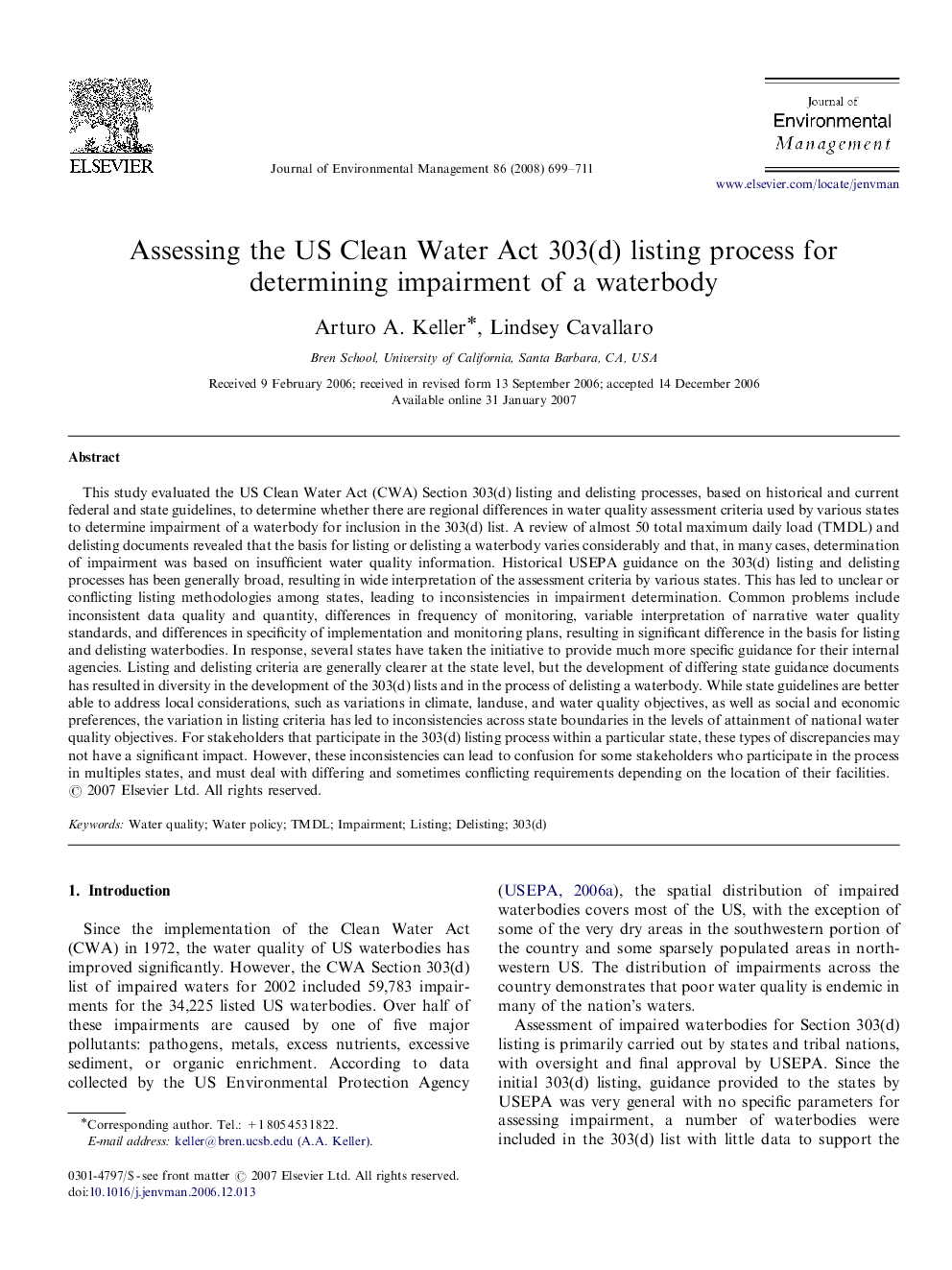| کد مقاله | کد نشریه | سال انتشار | مقاله انگلیسی | نسخه تمام متن |
|---|---|---|---|---|
| 1057861 | 947093 | 2008 | 13 صفحه PDF | دانلود رایگان |

This study evaluated the US Clean Water Act (CWA) Section 303(d) listing and delisting processes, based on historical and current federal and state guidelines, to determine whether there are regional differences in water quality assessment criteria used by various states to determine impairment of a waterbody for inclusion in the 303(d) list. A review of almost 50 total maximum daily load (TMDL) and delisting documents revealed that the basis for listing or delisting a waterbody varies considerably and that, in many cases, determination of impairment was based on insufficient water quality information. Historical USEPA guidance on the 303(d) listing and delisting processes has been generally broad, resulting in wide interpretation of the assessment criteria by various states. This has led to unclear or conflicting listing methodologies among states, leading to inconsistencies in impairment determination. Common problems include inconsistent data quality and quantity, differences in frequency of monitoring, variable interpretation of narrative water quality standards, and differences in specificity of implementation and monitoring plans, resulting in significant difference in the basis for listing and delisting waterbodies. In response, several states have taken the initiative to provide much more specific guidance for their internal agencies. Listing and delisting criteria are generally clearer at the state level, but the development of differing state guidance documents has resulted in diversity in the development of the 303(d) lists and in the process of delisting a waterbody. While state guidelines are better able to address local considerations, such as variations in climate, landuse, and water quality objectives, as well as social and economic preferences, the variation in listing criteria has led to inconsistencies across state boundaries in the levels of attainment of national water quality objectives. For stakeholders that participate in the 303(d) listing process within a particular state, these types of discrepancies may not have a significant impact. However, these inconsistencies can lead to confusion for some stakeholders who participate in the process in multiples states, and must deal with differing and sometimes conflicting requirements depending on the location of their facilities.
Journal: Journal of Environmental Management - Volume 86, Issue 4, March 2008, Pages 699–711